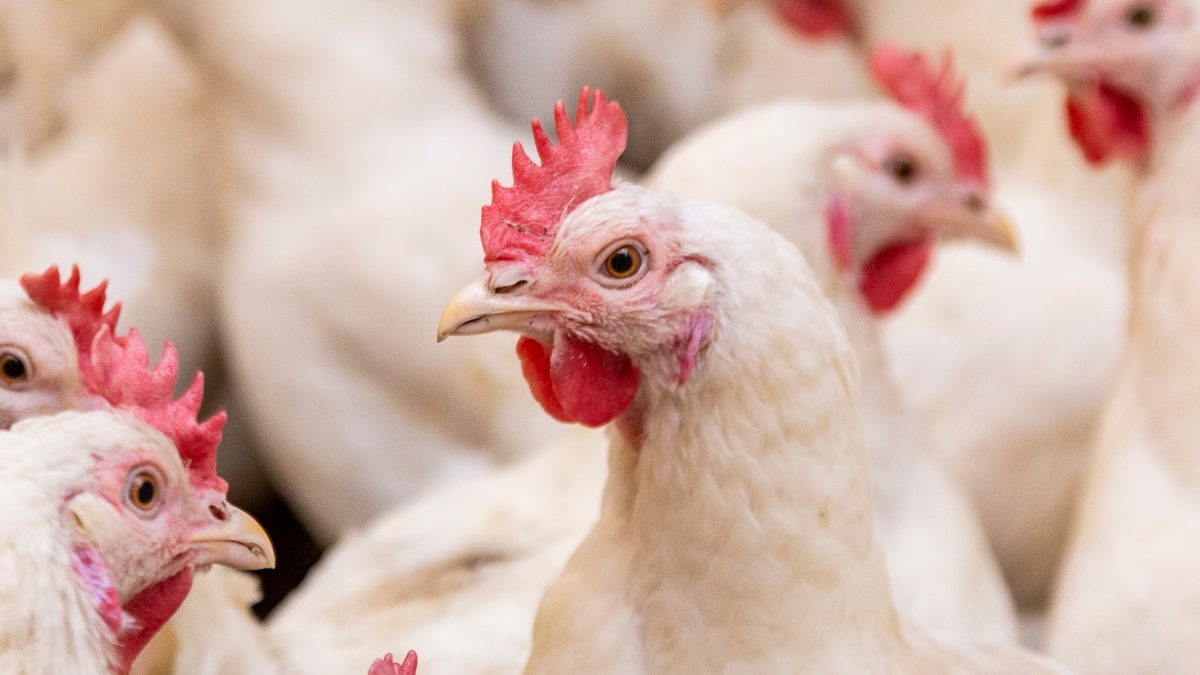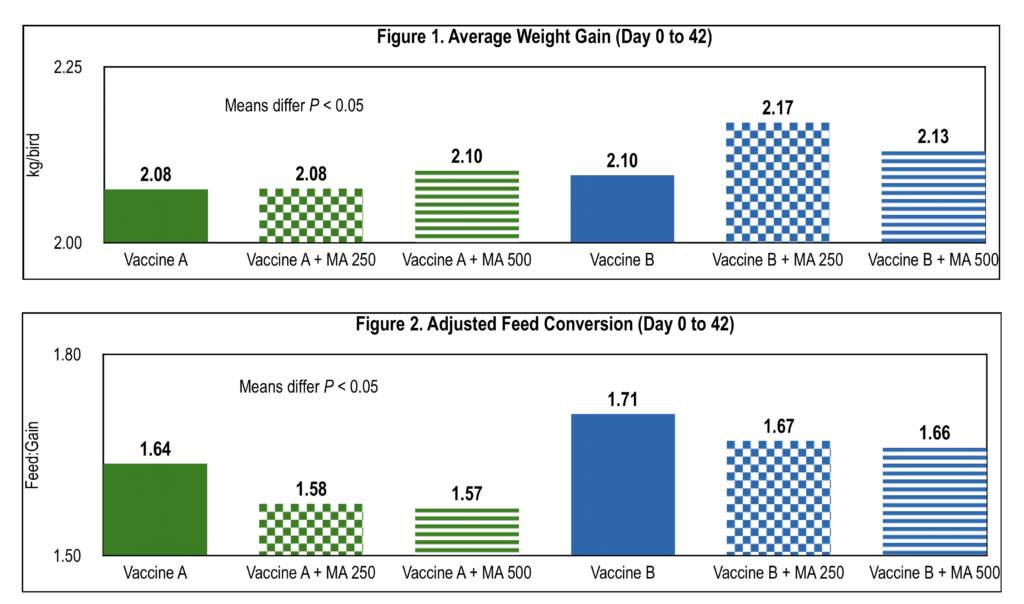
Performance of Broilers Vaccinated with Coccidiosis Vaccines and Fed Micro-Aid®
1,800 day of hatch male chicks (Cobb X Cobb 500) were allotted to one of six treatments (6 pens of 50 birds each): 1) Vaccine A; 2) Vaccine A + Micro-Aid® at 250 mg/kg; 3) Vaccine A + Micro-Aid® at 500 mg/kg; 4) Vaccine B; 5) Vaccine B + Micro-Aid® at 250 mg/kg; and 6) Vaccine B + Micro-Aid® at 500 mg/kg. The Control diet was a corn-soybean meal-based diet that was formulated to meet or exceed National Research Council (NRC, 1994) standards. Birds were allowed ad libitum access to feed and water during the three dietary phases: Starter (Day 0 to 21), Grower (Day 22 to 35), and Finisher (Day 36 to 42). Birds were placed in floor pens with 4 inches of built up litter, top-dressed with fresh pine shavings and then performance was monitored throughout the 42-day study.

-
Eimeria maxima is prevalent in the mid-intestinal region of the gastrointestinal tract and deeply invades tissues, because of this it tends to have a significant effect on performance and morbidity.
- As noted in Figure 1, Micro-Aid® supplementation improved weight gain by 2 to 7 points depending upon vaccine and dietary inclusion level.
- A similar response was measured in feed efficiency as Micro-Aid® at 250 and 500 mg/kg improved feed:gain by 4 to 7 points (Figure 2).
-
Dietary supplementation of Micro-Aid® improved both growth and feed efficiency of broilers. The better performance of these birds can be attributed to the healthier gastrointestinal tract coming from the mitigation of coccidiosis shedding and challenge.

